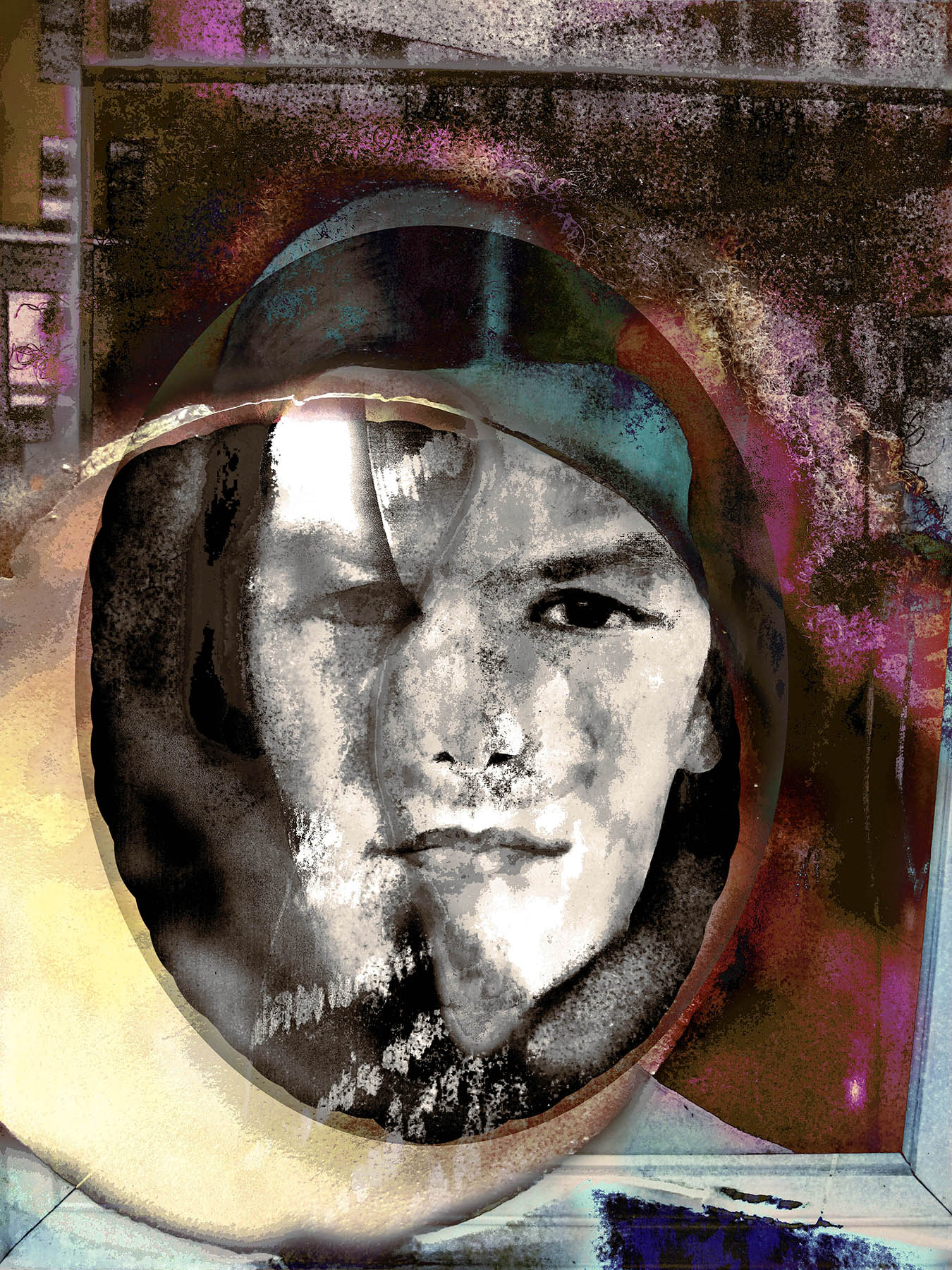One of the definition of licentious is disregarding accepted rules or conventions, especially in grammar or literary style. The artist I am introducing today extends that disregard to the conventions of portraiture with a distinct line-based approach.
Agnes Grochulska, a Polish painter who now lives in Richmond, Virginia, works with oils but also has a very strong background in charcoal and graphite drawing, and what appears to me, calligraphy.

Constructing portraits with lines is, of course, nothing new. Egon Schiele comes to mind, Mike Parr, Robert Marks closer to home; all configured faces in ingenious ways. Grochulska can be placed in that tradition in her depictions of sitters with calligraphic lines.
Her new work, though, adds some excitement with the addition of lines that do not delineate the portrait itself, but instead frame it.

You might remember that I devoted a week of blogs on face perception and recognition in February 2017, wearing my psychologist hat at the time. I talked about how we perceive faces holistically, not by attending to individual features. It is the relationships between features that count – the spacing of the eyes relative to the length of the nose and so on – which allow us to construct a whole that leads to recognition. I also mentioned that expectation guides your attention and your ability to interpret or parse a scene. Importantly, for visual inputs you can only see detail that is landing on your foveas; what lands on your foveas depends on where exactly you’re pointing your eyes; and movements of the eyes (pointing them first here and then there) turn out to be relatively slow. As a result, knowledge about where to look has an immense impact on what you’ll be able to see.

What Grochulska is doing is essentially grabbing our attention with added features – the contrasting and illuminating lines that divide rather than define the portrait – leading us to foveate on those and registering them as features, pulling us away from more holistic processing. We might swing back to the face, try to glimpse its emotional valence, or other associations it triggers, but the magnetism of the lines is strong, we will return to them. For me it resulted in a sense of scanning (although some of these paintings are rather small,) an action often associated with a more evaluative type of perception, looking someone over. It sure triggered my curiosity that I was able to be manipulated that way. It also served as a strong reminder that we should be wary of being caught by salient details, when really what is required is a look at the “whole” picture.

Add to that a more positive reaction: joy. The use of color, in its expressive, declarative form in those frames suggests abandon, a painter not holding back. No wonder people cite Oscar Wilde in connection with reviews of Grochulska’s work: “Every portrait that is painted with feeling is a portrait of the artist, not the sitter”.
Here are additional examples of the Outline Series. I very much hope there will be a time when one can see these paintings in their original form, not just on screen.
Montages today of divided fields of perception:

Music today is by another artist from Poland, who also picked apart lines, and whose work was called bizarre but totally arresting – something one might apply to the paintings as well. Penderecki died this March.





